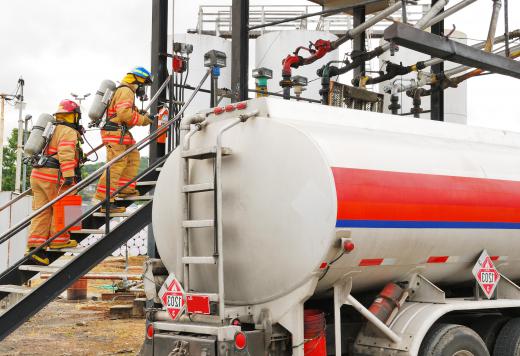A hook ladder is a type of ladder that is shaped much like a question mark. In the hook portion of the question mark, the ladder usually has saw-like teeth that are used to secure it to windows or other stationary objects. The ladder also contains rungs, which are attached to the longer portion of the question mark. Historically, firefighters used hook ladders to scale walls when rescuing people from burning buildings. Although they are usually not used in modern firefighting, hook ladders are sometimes still employed by firefighting schools during new recruit training.
Hook ladders were first used in fire rescue during the late 1800’s. They are believed to have been invented by Chris Hoell, a lieutenant from St. Louis, Missouri. In his honor, the hook ladder was originally called the Chris Hoell life saving device. A hook ladder is sometimes also referred to as a scaling ladder or a pompier ladder, the term pompier being a generic name for French firefighters. Hook ladders gained popularity worldwide.

Hook ladders were primarily used when firefighters did not have access to stairways. The first recorded rescue occurred in 1894 in New York City when a firefighter named John Binns, who belonged to Hook and Ladder Company 3, used a hook ladder to climb up the outside of a burning apartment complex. With the assistance of the ladder, Binns was able to successfully rescue a young man who was trapped on the seventh floor of the building.
Using a hook ladder required firefighters to have a great deal of skill because the ladder had to be thrown from one window to another. Generally, from ground level, a hook ladder firefighter would thrust the hook through a first or second level window. After securing the hook to the window sill, the firefighter used the hook ladder to climb up into the window. Next, while straddling the window sill, the firefighter would pull the ladder up and thrust it though the next highest window. This process would be repeated until the firefighter reached the final destination.
In modern times, hook ladders are no longer widely used in fire departments. By and large, a device called a turntable ladder has replaced the hook ladder as a means of scaling high walls. A turntable ladder typically consists of a long ladder that is fixed to a turntable on the back of a fire truck. The ladder is usually able to rotate from its base, allowing greater length and more flexibility.
